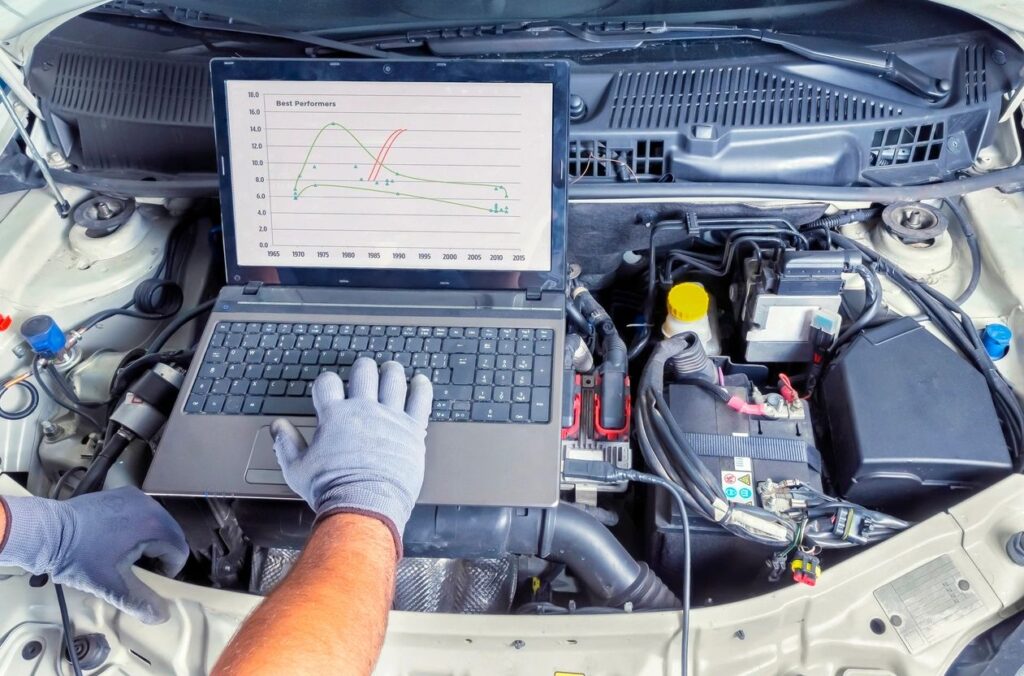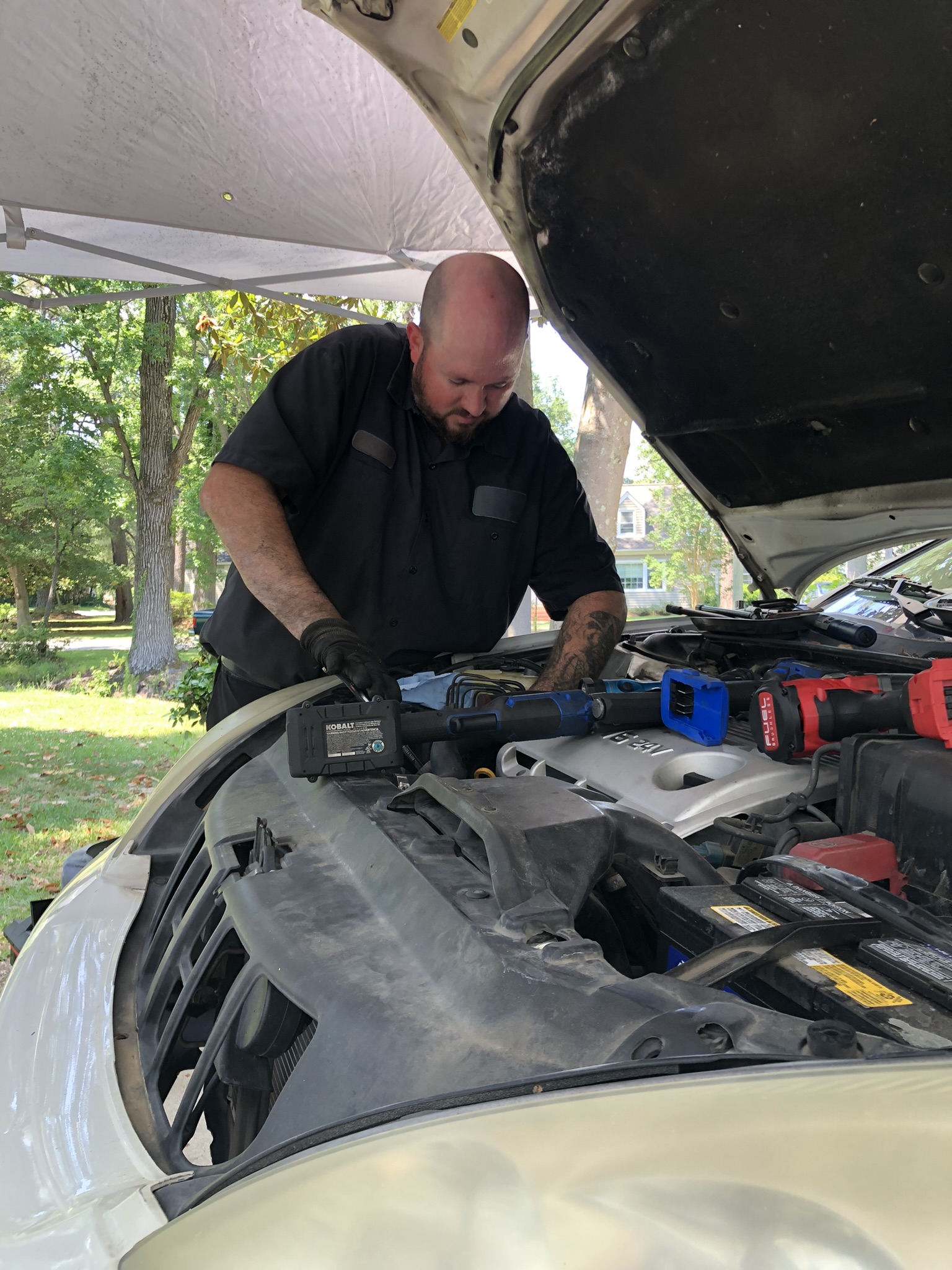
Timing Belt Q & A with Zack Bernet, Founder/Mobile Engine Medics
By Casey Saumure
Anyone who knows Zack, knows he loves to talk about cars. He can explain complex mechanics in depth. Today, we had a moment to interview him about timing belts.
Me: OK tell me what consumers need to know about timing belts.
Zack: Well, timing belts are maintenance items. Don’t ignore this one. Maintenance charge now, or big repair charge later.
Me: First, what is a Timing Belt?
Zack: I’ll have to tell you how it came about to explain what it is. So, first, a history lesson.
Sometime in the early 90s manufacturers changed the design of engines. This had to do with emissions and with compliance standards evolving over time.
Later, emissions become more stringent. Guidelines varied state-to-state. That forced manufacturers to redesign to reduce emissions.
In the redesign, they moved away from what they called a non-interference design engine to an interference design engine.
In a non-interference engine, if the timing belt were to break, the pistons and the valves, which are opposing each other, will not come into contact with each other. As the engine is operating, the pistons are coming up and the valves are coming down, but they never intersect each other‘s paths
In an interference design, if a timing belt breaks things that are rotating inside the motor will hit each other.
Zack: The manufacturers had to reduce emissions. They had to redesign things to become more efficient. They did that by tightening up tolerances and improving timing. That improves air and fueling. In doing that, we re-designed engines that crossed each other‘s paths, but the timing prevents them from touching. Does that make sense?
Me: Yes, but that sounds like things got more complicated.
Zack: Yes, if we lose timing, conflict happens inside the engine at high speed. It can be devastating to the engine.
Me: I wonder how replacing an entire engine’s carbon footprint compares to reduced vehicle emissions?
Zack: Things used to be designed in a way that they almost lasted forever and now everything is disposable but as I said, that’s another topic.
Zack Continues: So, the midpoint and at some point the valves are down this far and at some point, the pistons are this far. (joins fingers)
Me: So they’re overlapping?
Zack: Yes, they cross. The timing belt keeps them from hitting. They are never in each other’s path as long as the motor is timed. If the timing belt breaks, the engine loses timing. Internal parts start colliding with each other.
The engine suffers major internal damage and the only way to fix that is to take it apart and replace everything that was damaged by unintended contact or replace the engine. Needless to say- it’s expensive.
The general rule of thumb for timing belts is about 7 years or 70,000 miles, whichever comes first. Some cars can go like 125,000. Recently, I worked on a 2013 Volkswagen Jetta. The manufacturer didn’t recommend that the timing belt be replaced until almost 130,000 miles. But, you absolutely must check your manufacturers’ recommendations. You must check your belt between replacement intervals.
Most technicians will tell you that the belt should be pretty much replaced between 60,000 and 80,000 miles. This is where your experience really comes into play. Volkswagen for example will tell you (on certain vehicles) that they recommend replacement at 130,000 miles and to inspect it every 10,000 miles. Then replace it after around 80,000 miles.
That means removing the cover that covers the timing belt and actually assessing the condition. If necessary replace it earlier than 130,000 but like on your Lexus for instance, the manufacturer says it needs to be replaced every 70,000 miles or seven years.
Most people don’t put this many miles on their cars so their belts will age out before they reach the mileage threshold. Different cars have different timing systems and altering designs. Some components don’t wear out as often. Cycles of winter and summer, exposure, maintenance practices, and tension all play a role.
Me: That’s a lot to unpack. Just curious, what’s the best car out there?
Zack: (Without pause) A 1991 Toyota Camry. You don’t have to worry about it as much, because that’s a non-interference engine. It’s an older engine. If the timing belt breaks, it will leave you stranded, but you won’t have colliding pistons and valves.
Me: What should the average consumer look for when your timing belt goes bad? Do you get a warning?
Zack: Not usually. You may hear a belt squeak. The check engine light may come on. You may have performance issues. But you may not.
Zack: Here’s a neat clue you might check. Every timing belt kit comes with a sticker that a technician is supposed to apply under the hood somewhere. Look under your hood. It will show the date it was replaced and the mileage. But, the stickers get washed off and fade. It’s still important to keep records as well.
Me: What does the timing belt look like?
Zack: It’s just a thick belt with teeth. Everything is timed. Your camshaft controls your valves and they have sprockets on them. The gears, with teeth, match the belt to the crankshaft and that’s how everything is kept in time. So if it were to be off by even one tooth, you’ll notice a serious problem.
It’s important to hire a qualified technician because if he’s off by one tooth, it can damage the engine or it won’t run properly when it’s started. It could have that contact inside the engine that we were trying to avoid. If a mechanic isn’t qualified or just wasn’t paying attention you have another problem.
Modern engines are more heavily computer controlled. You have variable valve timing and actuators. You’re constantly monitoring and changing the timing. We also have gears that are timed by the belt, but now those gears can also change when commanded. Phasers they’re sometimes called.
Me: Like set phasers to stun?
Zack: Exactly. These adjustments make everything more efficient, and more complicated. Generally speaking, if we start to see an issue with timing before the belt breaks on a really modern vehicle, we’re going to see a check engine light and a fault code.
Me: So how far can I push it? Let’s say the check engine light comes on. But the car is running fine. Should I pull over to the side of the road immediately? Can I wait until I get paid?
Zack: That’s a super-popular question. Everyone always wants to know, “How long can I go”. The truth is, there’s no way to know. Small or large, a problem has been detected. You should always stop somewhere safe. However, If the check engine light is blinking, a problem has been detected that could damage your catalytic converters or, in severe cases, cause a fire, if you continue to operate the vehicle,
Don’t drive the car. Call me to take a look at it.
